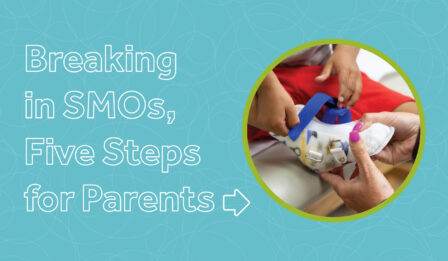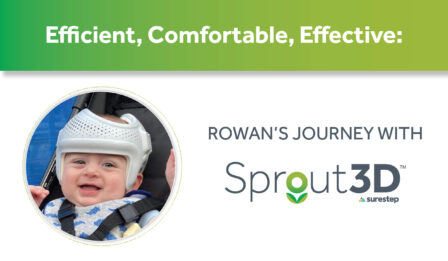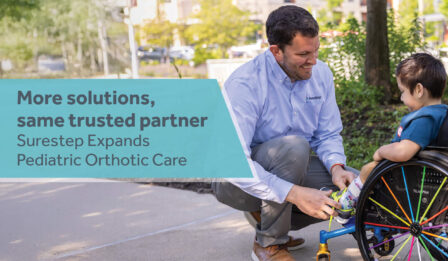What Parents Need to Know About Socks for SMOs, AFOs, and KAFOs
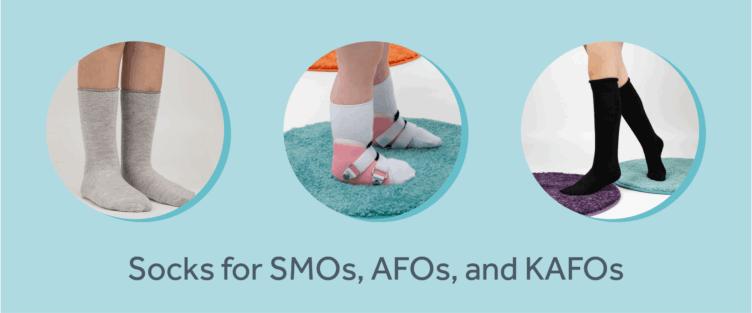
I caught up with Surestep orthotist and educator Camille and asked her about the importance of socks for kiddos and parents. She told me what she has been seeing in the clinic.
“First, generic socks you buy at the store usually have a built-in heel. But a lot of our patients have proportions that don’t fit the average sock.
Then, a lot of kiddos wear AFOs, and the parents get a bigger size of sock to be tall enough to fit under the whole AFO. But that means the built-in heel of the sock is up on their calf—not their heel. And the sock is still loose around the foot.
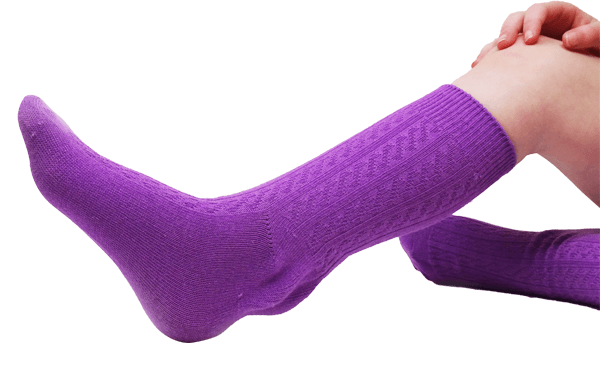
Here’s what a poorly fitting sock does:
- It changes the fit of their SMO or AFO, because of the extra fabric moving around.
- It can put excessive pressure on their skin where the fabric bunches or wrinkles. This can lead to discomfort or blisters!
- Makes their feet hot because of the extra fabric.
- Changes how they walk, because they feel uncomfortable.
Second, store-bought socks also have seams. Our kiddos who have sensory processing dysfunctions are sensitive to seams! They don’t like feeling that seam touching their toes.
I’ve had patients who wear their socks inside out just to stop feeling that seam touching their skin.”
Why Do Kiddos Need Socks?
OK, I asked Camille, since socks are such a problem, do patients even need socks? Here’s what Camille said:
“Yes! Socks protect their feet. They make an interface between the skin and plastic that can:
- Reduce friction.
- Prevent blistering and sores.
- Pull sweat away from their skin.
But here’s the thing. Socks come in all shapes, sizes, and fabrics. You can find the best one for your child that they’re going to wear constantly! Certain fabrics and designs can make wearing orthoses more comfortable for your kiddo.
Patients who have to wear SMOs or AFOs all day get sweaty in their socks. Plus, some of them are working really hard to stabilize themselves, which leads to more sweat—another reason they need great socks.”
5 Socks Tips Parents Can Use
Camille has seen a lot of tips and best practices about using socks. Here are five tips she told me:
- Pack Extra Socks: If you live in a hot and/or humid area, send extra socks with your kiddo when he or she goes to school. If they change sweaty socks around lunchtime, it can help prevent bacterial infections, athlete’s foot, and blisters.
- Try Unscented Laundry Detergent: Some strong scents can cause skin reactions or sensory reactions that some kiddos find overwhelming.
- Get Longer Socks: Make sure the socks extend past the plastic of the braces, protecting the skin wherever it touches.
- Replace Socks: Kiddos’ socks only last about 6–12 months, depending on how much they’re used.
- Fold the Tops of Long Socks: For a child in AFOs or KAFOs, some parents fold socks over the top of the braces to prevent the socks from moving around during the day—and to cover up the brace’s Velcro and top edges.
Even with moisture-wicking socks (see below), kiddos in a hot region may need to change socks during the day—especially if they have gym class scheduled.
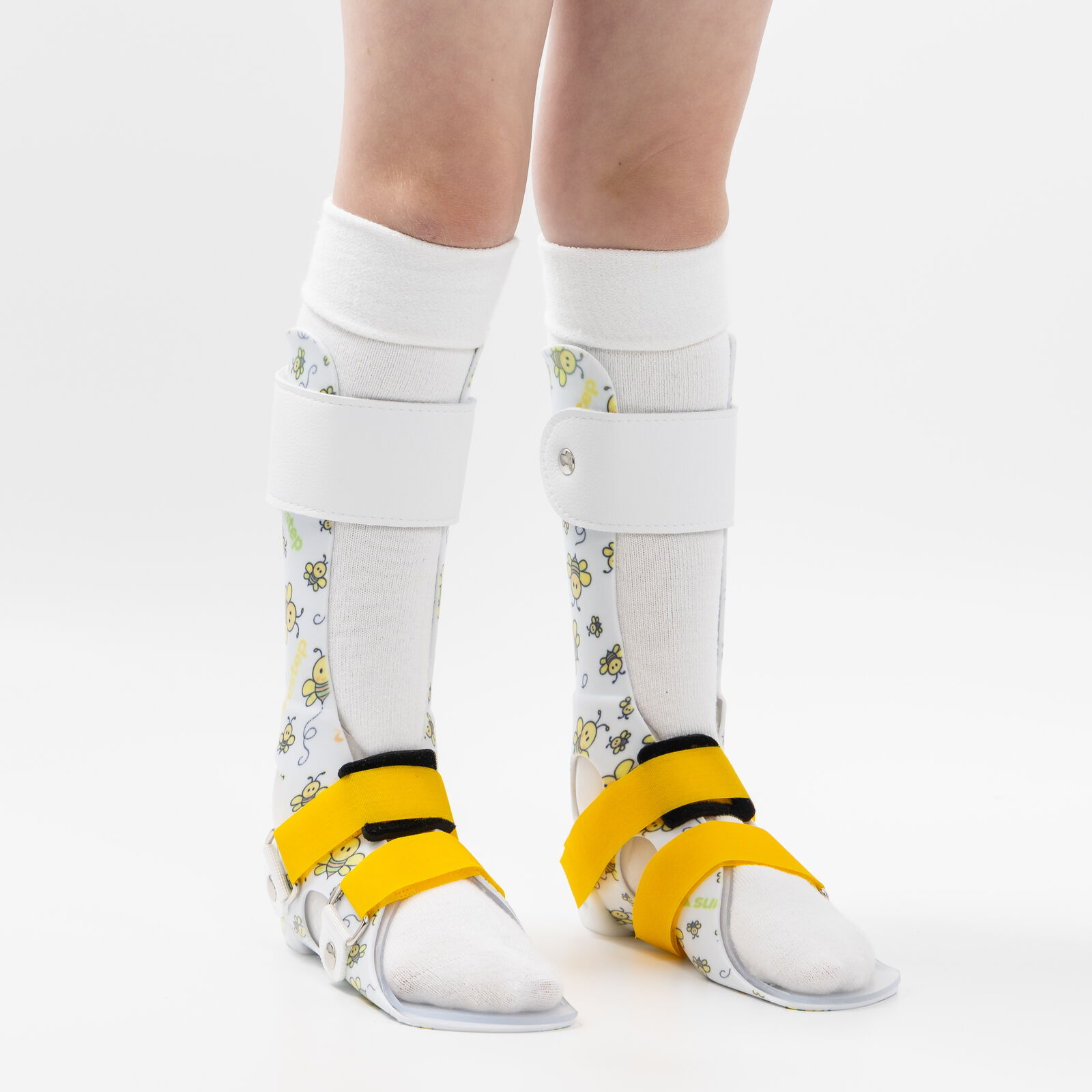
Best Type of Socks for Braces?
Wearing SMOs, AFOs, or KAFOs all day can make kiddos work up a sweat. Great socks protect their skin and keep them more comfortable.
This can even improve the effectiveness of the brace itself, because a comfortable child will practice healthy movements more consistently.
That’s why we designed these two types of socks:
- Surestep Socks: Include COOLMax fibers to help pull sweat away from sensitive skin more quickly than average socks, helping cool the feet. Designed for SMOs and AFOs.
- Surestep Premium Socks: Include X-Static® silver-coated fibers, which destroys bacteria. This helps fight athlete’s foot, infections, and odor. Designed for SMOs, AFOs, and KAFOs.
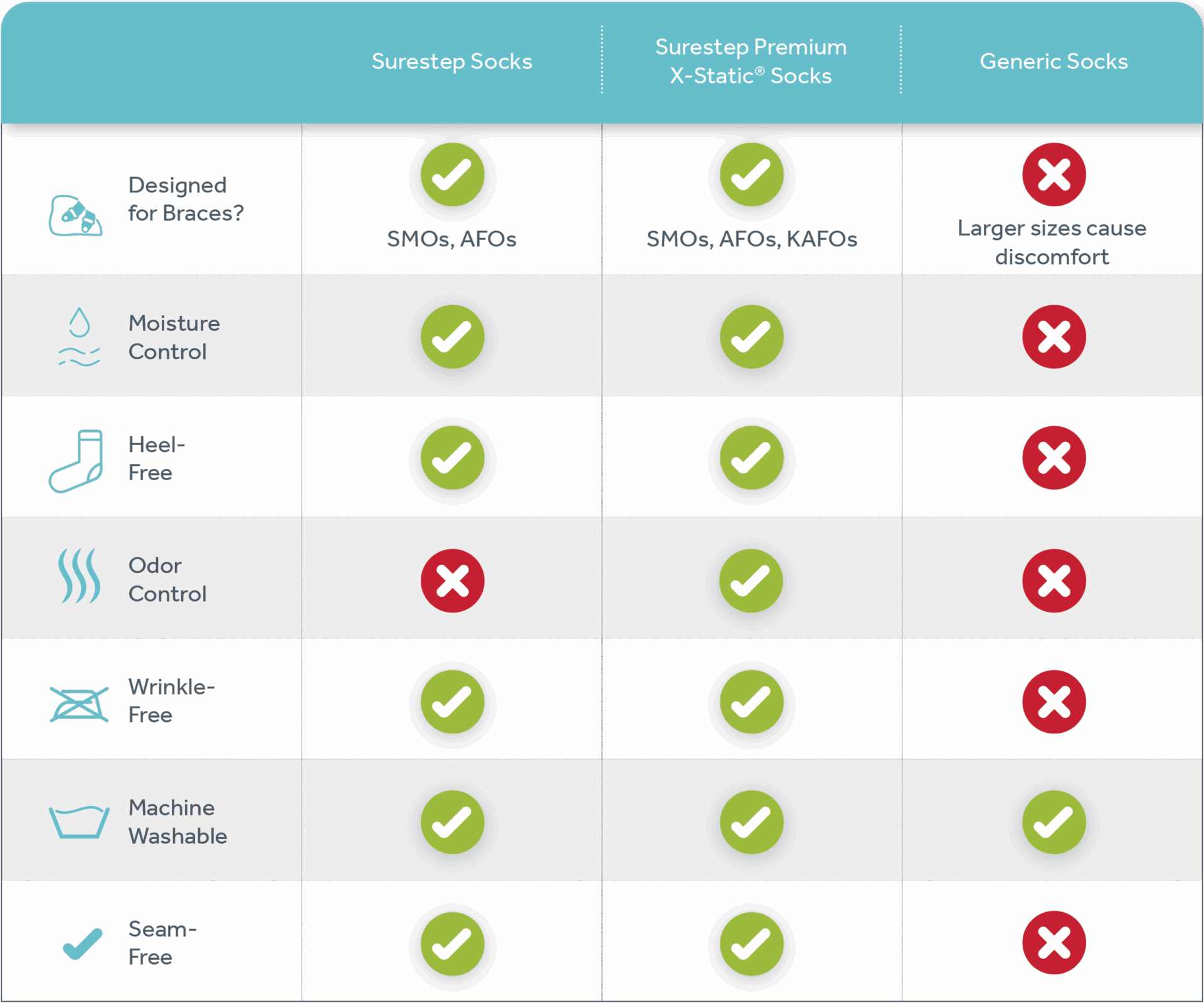
If you want to improve your kiddo’s comfort level with socks, try Camille’s five tips from earlier. Next, we recommend testing either type of Surestep socks, because they feature:
- No seams (no rubbing against toes!).
- No heel—eliminates bunching and irritation.
- Gentle compression to eliminate wrinkles.
- Moisture wicking technology to reduce sweat.
- SMO, AFO, and KAFO sizes.
- Soft, comfortable fabric.
- Machine washability.
Camille gave me one last tip:
Sock size is more important than width for parents to think about. For example, a child might be six years old, so the parent thinks she should be in a “small” size sock. But she happens to be really tiny, so she actually needs to be in a toddler sock. This can help parents who are moving over from another brand.
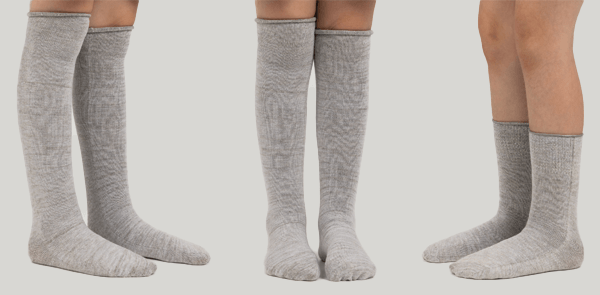
If you have any questions about our socks, please contact us! Our goal is to help your child have a life-changing experience with braces. And sometimes socks are the missing puzzle piece that can help make that picture real.

